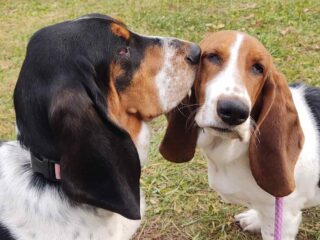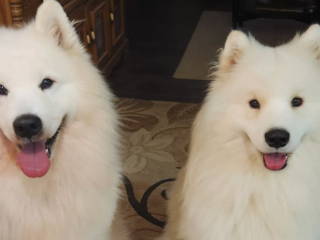Basset Hounds are some of the most popular dog breeds around. They are known for their loyal personalities and, of course, their adorable droopy ears.
While many people are familiar with the Basset Hound breed, some people do not know that there are both American and European Basset Hounds, but what is the difference?
There are several physical characteristics that separate the European Basset hound from the American Basset Hound but other than a few minor differences, the two dogs are almost identical!
If you are interested to learn more about European Basset Hounds, what makes them different, their history, etc. keep reading to find out!
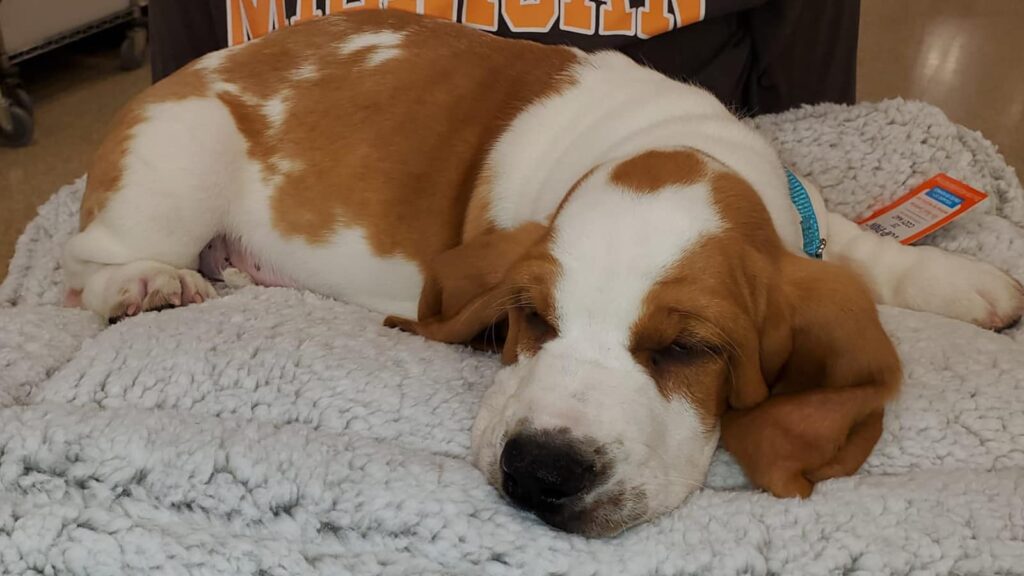
History of the European Basset Hound
All dogs have to come from somewhere, it is oftentimes very interesting to learn about different dog breeds and where they originated from.
Basset Hounds were originally bred in France during the 6th century and were used as scent hounds, meant to hunt rabbits and other small animals. The breed began appearing in America in the late 19th century.
Disclaimer: This post may contain affiliate links. We only recommend high-quality products that are used and recommended by real owners. If you use these links to buy something we earn a small commission.
The European Basset hound slowly gained more popularity over time and slowly made its way into the homes of people considered “royal.” There are several famous British royals who were known to own Basset Hounds, including Queen Victoria!
NOTE: The Basset Hound is one of the oldest dog breeds around!
The European Basset Hound is rarer in the United States because there are typically only American Basset Hound bloodlines being bred.
While Basset Hounds are still used for hunting in some cases, as the years have gone on, this breed has become a very popular household pet.
Because they are so well behaved, social, and friendly, this breed is great for having around, especially with families and children, and is one of the best companions a dog owner can have!
American Vs. European Basset hound (What is the Difference?)
Oftentimes when people learn that there are both American and European Basset Hounds they begin to wonder, what is the difference between the two?
The truth is, American and European Basset Hounds are the same other than slight changes in their physical appearances.
Because of ancestry and breeding, this breed has experienced slight changes in appearance throughout time.
One of the biggest differences between the two is that the European Basset Hound has more wrinkles and is slightly larger than the American Basset Hound, the American hound can have smoother-looking skin folds.
NOTE: The European Basset Hound was also recognized by the American Kennel Club (AKC) before the American Basset Hound.
The American breed can be slightly smaller and thinner than the European and their howls can be slightly different in sound.
Other than these slight differences, these two dogs are exactly the same. Here are some of their most distinct similarities and differences:
- Coloring — Both of these breeds have the same fur colors. Tri-colored Basset Hounds are most popular (usually a mix of black, white, and brown). The rarest color is blue (not actually blue but it will appear slightly blue because of genetic mutation). This breed can also have colors of red and lemon.
- Grooming — It is important to be aware of the European Basset Hound’s skin folds when they are being groomed. Drying between their wrinkles is important to ensure that there are no bacteria that become trapped, this can cause issues such as dry skin, ringworm, rashes, etc.
- Price — Because European Basset Hound bloodlines are rare in the United States, be prepared to pay more if you come across a European Hound in the USA, they will be much pricier than an American hound (puppies typically range between $1,300–$2,000)
NOTE: A European Basset Hound can range anywhere from $600–$3,000 depending on the circumstances.
- Size — In adulthood, both hounds will be similar in size; however, as puppies, the European Basset Hound will look way smaller than the American hound. Once the puppy begins growing, it will typically be even in size and occasionally the European hound will even become slightly bigger than the American hound.
- Ears — Both the American and European Basset Hounds have floppy ears; this is why it is important to make sure their ears are cleaned well. Bacteria are known to build up in floppy ears because moisture becomes trapped, this eventually causes infection.
NOTE: Keeping up your Basset Hound’s hygiene is key in making sure that no issues arise. Try wiping them down after being outside to remove any dirt, debris, or sweat that has built up between their skin folds. Basset Hound Ear Care and Cleaning Guide
- Diet/Nutrition — The American and European Basset Hound are both prone to obesity, they LOVE food and try to eat anything they can! It is important to know that they are oftentimes overeaters and gain weight very quickly, don’t be surprised if your Basset Hound starts begging for food.
If you are struggling with your Basset Hound begging for food, training might be a great option, check out this article to learn more: How to Train a Basset Hound (Tips & Tricks from Owners!)
TIP: Be careful when using treats to train your Basset Hound, this can cause them to gain weight even quicker.
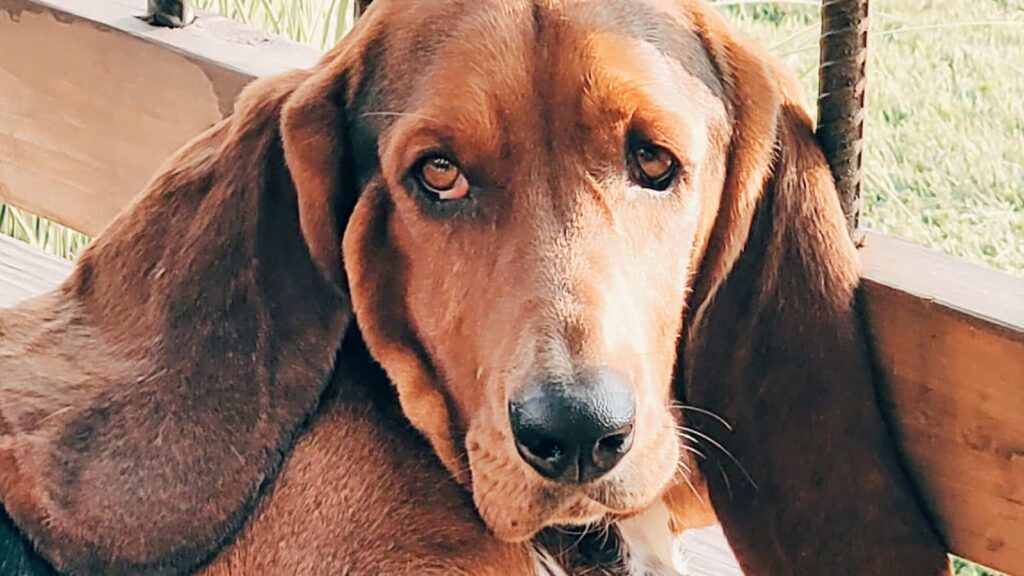
What Does a European Basset Hound Look Like?
If you are interested in getting a European Basset Hound, you are probably wondering what they look like if you aren’t already familiar.
This dog has very distinct physical characteristics including short legs, wrinkled skin, a larger head, muscular body, short coat, droopy eyes/ears, etc.
This breed is considered to be a medium/large dog, usually standing at around 14 inches tall and weighing between 40–80 pounds (depending on whether it is female or male) and averaging between 26–35 inches in length.
The breed’s shorter bodies and amazing sense of smell is what make them perfect hunting dogs!
There is oftentimes a slight difference in weight when comparing the European Basset Hound to the American hound. The European usually weighs at least 75 pounds, whereas the American will weigh between 45–65 pounds.
Just like any other AKC dog breed, there is a standard look for European Basset Hounds.
European Basset Hounds must have certain attributes and characteristics that make them AKC certified. Some include their paw size, skin, head size, height/weight, etc.
Here are some of the AKC standards for the European Basset Hound:
- Large head
- Short legs
- Broad chest
- Big paws
- Wrinkled skin
- No long coat
- No docked tail
- Soft eyes (droopy)
- Low ears that curve slightly in on their ends (droopy ears)
European Basset Hound Temperament
One of the most important things that dog owners consider when getting a dog is what the dog’s temperament will be.
A dog’s personality and behavior are very important to consider, especially if they are going to be around other people or animals.
Thankfully, European Basset Hounds are known for being low-maintenance, friendly, and playful dogs.
European Basset Hounds do have their lazy moments, they love laying around on their comfy beds and sleeping.
Although they do love relaxing, European Basset Hounds still also like playing with their owners, children, and other dogs, they will typically even get along with cats!
This breed is known for being great for families, especially those who like to go out a lot and take their dogs with them. A European Basset Hound is always ready to go with the flow!
While European Basset Hounds are easy-going and loyal, they are also stubborn and very independent! These two personality traits make them harder to train than some other breeds.
NOTE: Training a Basset Hound requires consistency and patience, check out this article to learn more about training Basset Hounds: How to Train a Basset Hound (Tips & Tricks from Owners!)
How to Groom a European Basset Hound?
A lot of dog owners wonder what the grooming requirements will be for a new dog they may be considering adding to their family.
People are oftentimes concerned about the amount of shedding, allergies, etc. that can occur because of a dog’s fur.
Thankfully, Basset Hounds are known for having low shedding because of their short coats. While they aren’t hypoallergenic, there are less likely to cause allergies compared to other breeds.
There are several things to keep in mind when grooming a European Basset Hound, here are the most important:
- Give your Basset Hound a bath at least once a month.
- Consistently brushing a Basset Hound is the best way to ensure their fur stays in good condition.
- Be sure to clean their ears! Without proper ear care, European Basset Hounds are very likely to develop ear infections.
NOTE: If you are unsure how often to groom your European Basset Hound, visit your vet! They will be able to provide some grooming services and help you out with deciding how often you should be grooming your dog in particular.
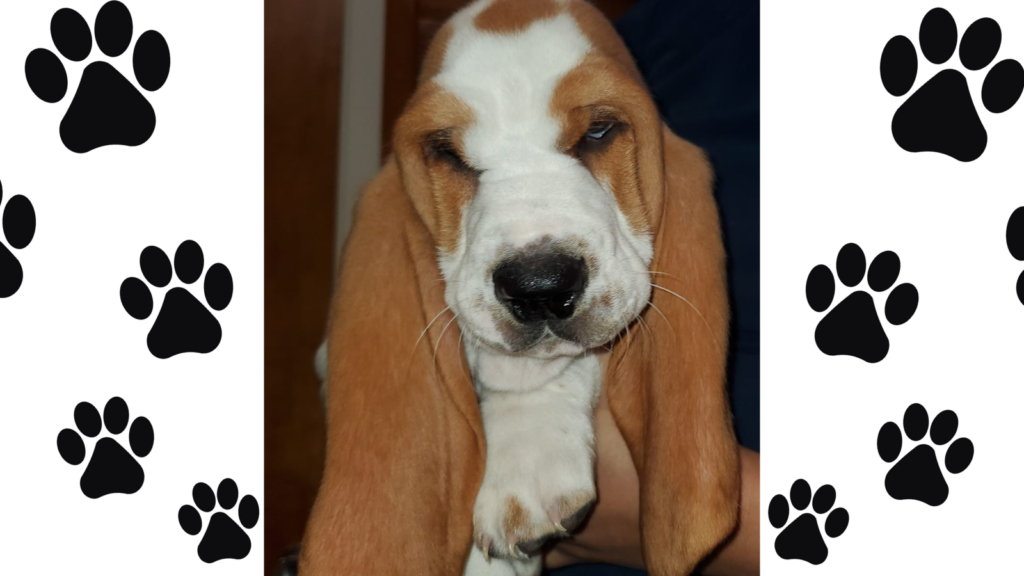
European Basset Hound Health Issues & Lifespan
The health of our dog(s) is one of the biggest concerns for us dog owners. When people consider getting a new dog, especially if they are unfamiliar with the breed, the first question they may ask is if they are at risk for any health issues.
The European Basset Hound has several health problems that tend to occur within the breed. Some issues include eye problems, arthritis, teeth issues, ear infections, etc.
Thankfully, there are many treatments for any problems your dog may have. If you are concerned about your dog’s health, visit your vet, they will be able to find the best solutions!
European Basset Hounds are known to have lifespans that are decent for a dog of its size. They typically live between 10–12 years. They also aren’t at high risk for any fatal disease or illnesses; a lot of their health issues can be cured with medication, diet change, etc.
Here are some of the most common health issues that occur in the European Basset Hound breed:
- Ear Infections — Because of their droopy ears, moisture is more likely to become trapped which can lead to bacteria growth and ear infections.
- Eye Problems — Cherry eye (red eye) is very common within the Basset Hound breed. This occurs when the third eyelid becomes inflamed and turns red. Basset Hounds are also likely to develop glaucoma (damage to the eye’s optic nerve/Can cause vision loss.)
- Breathing Issues — Because Basset Hounds have shorter noses, they will sometimes experience breathing problems. They are also known to develop a disease called “dilated cardiomyopathy” which causes the heart to inflate and weaken, causing the dog to wheeze.
- Thrombopathia — This is a disorder that is passed on from a dog’s parents; excessive blood loss occurs because the dog’s body does not heal properly and will not close a wound.
- Intervertebral Disc Disease — This is common for dogs that have short, stockier bodies. The pressure on the bones causes them to break down faster. This breed is also known for developing arthritis.
- Teeth Issues — Because a Basset Hounds jaw is so small, their teeth can quickly become overcrowded. This makes the teeth harder to clean which can lead to infection and swollen gums.
- Epilepsy/Seizures — Oftentimes caused by Addison’s Disease. While this disease is typically uncommon, Basset Hounds are one of the breeds that are most likely to develop it.
NOTE: Addison’s Disease occurs when a dog is unable to produce certain hormones that regulate its internal organs. Thankfully, with the right medication, dogs have been able to live completely fine and comfortably while having the disease.
Read these articles next: (All About Basset Hounds!)
Basset Hound Ear Care and Cleaning Guide
Why Does My Basset Hound Eat Everything (Grass, Poop, Sticks, Dirt)?


